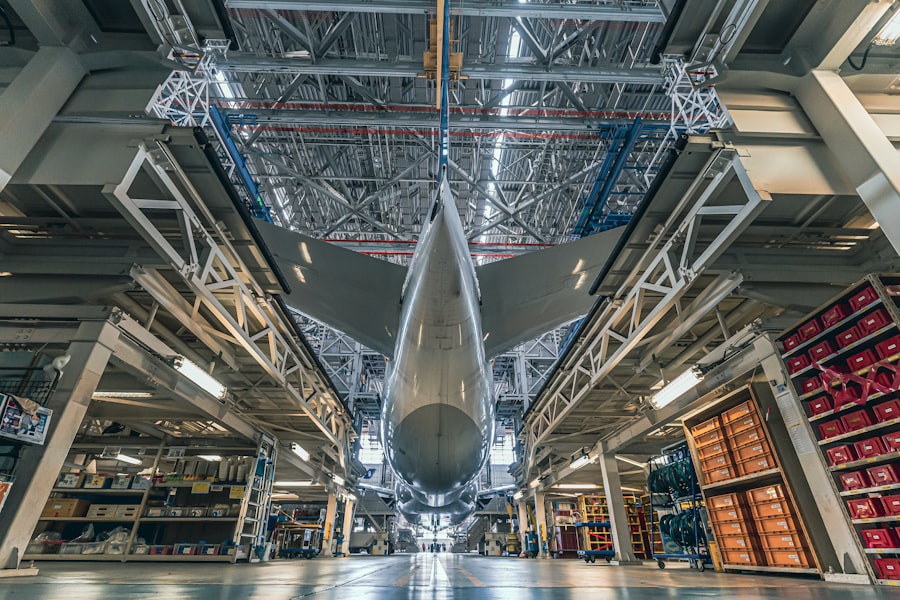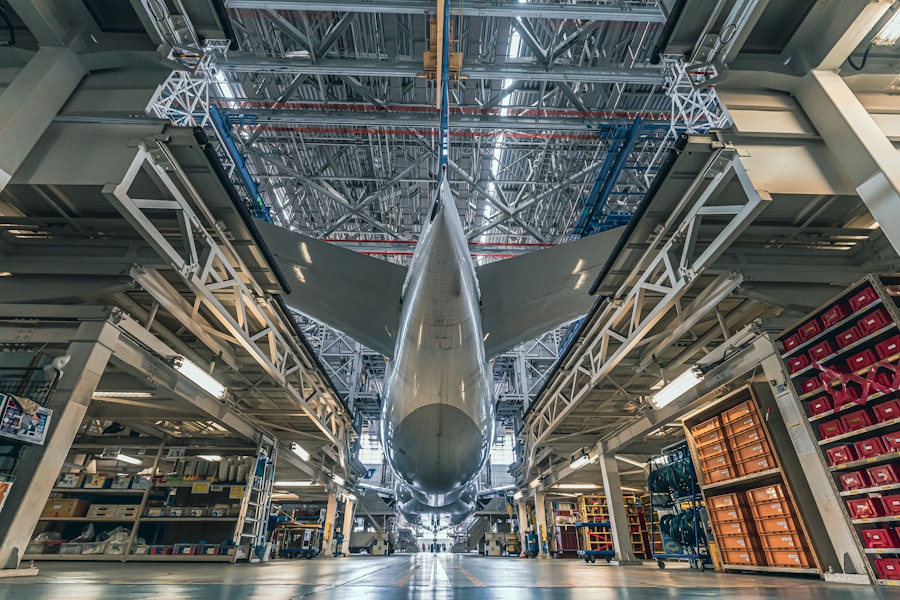Aerospace engineering is a multifaceted discipline that encompasses the design, development, testing, and production of aircraft, spacecraft, and related systems and equipment. This field is a confluence of various engineering principles, including mechanical, electrical, materials, and computer engineering, all tailored to meet the unique challenges posed by flight and space exploration. The origins of aerospace engineering can be traced back to the early 20th century with the advent of powered flight, but it has since evolved into a sophisticated domain that plays a critical role in modern transportation, defense, and space exploration.
The significance of aerospace engineering extends beyond mere transportation; it is pivotal in advancing technology and innovation. The field has contributed to the development of cutting-edge technologies such as satellite communications, global positioning systems (GPS), and advanced materials that have applications in various industries. As the world faces challenges such as climate change and the need for sustainable energy solutions, aerospace engineers are at the forefront of developing more efficient aircraft and exploring alternative propulsion systems.
The integration of artificial intelligence and automation in aerospace systems further underscores the importance of this discipline in shaping the future of transportation and exploration.
Key Takeaways
- Aerospace engineering covers the design, development, and testing of aircraft and spacecraft.
- The curriculum includes courses in aerodynamics, propulsion, materials, and systems engineering.
- Graduates can pursue careers in aviation, space exploration, defense, and research sectors.
- Internships and research projects provide practical experience and industry exposure.
- Specializations include aerodynamics, avionics, propulsion, and structural design.
Curriculum and Coursework
The curriculum for aerospace engineering is designed to provide students with a robust foundation in both theoretical knowledge and practical skills. Typically, undergraduate programs begin with core courses in mathematics, physics, and chemistry, which are essential for understanding the principles of flight and materials science. As students progress, they delve into specialized subjects such as fluid dynamics, thermodynamics, structural analysis, and propulsion systems.
These courses are often complemented by laboratory work that allows students to apply theoretical concepts in real-world scenarios. In addition to technical courses, aerospace engineering programs often include classes in project management, ethics, and communication skills. These subjects are crucial for preparing students to work effectively in teams and communicate complex ideas to diverse audiences.
Many programs also emphasize computer-aided design (CAD) and simulation tools, which are integral to modern aerospace engineering practices. Advanced coursework may cover topics such as avionics, spacecraft design, and systems engineering, providing students with a comprehensive understanding of the various components that contribute to aerospace systems.
Career Opportunities in Aerospace Engineering

Aerospace engineering graduates have a wide array of career opportunities available to them across various sectors. One of the most prominent employers in this field is the aerospace industry itself, which includes major companies such as Boeing, Lockheed Martin, and Airbus. These organizations seek engineers for roles in design, testing, manufacturing, and project management.
Additionally, government agencies like NASA and the Department of Defense offer positions that focus on research and development for space exploration and national defense. Beyond traditional aerospace roles, graduates can also find opportunities in emerging fields such as unmanned aerial vehicles (UAVs) and commercial space travel. The rise of private space companies like SpaceX and Blue Origin has created a demand for engineers who can innovate in areas such as rocket propulsion and spacecraft design.
Furthermore, aerospace engineers are increasingly sought after in sectors like renewable energy, where their expertise in aerodynamics can contribute to the development of wind turbines and other sustainable technologies. The versatility of an aerospace engineering degree allows graduates to explore diverse career paths while contributing to advancements that shape our world.
Internship and Research Opportunities
| Opportunity Type | Field | Duration | Eligibility | Application Deadline | Location |
|---|---|---|---|---|---|
| Summer Internship | Computer Science | 8 weeks | Undergraduate students | March 31, 2024 | Remote / On-site |
| Research Assistantship | Biotechnology | 6 months | Graduate students | April 15, 2024 | On-site |
| Internship | Environmental Science | 3 months | Undergraduate and Graduate students | May 10, 2024 | Remote |
| Research Fellowship | Physics | 1 year | PhD candidates | June 1, 2024 | On-site |
| Internship | Marketing | 4 months | Undergraduate students | April 30, 2024 | Remote / On-site |
Internships play a crucial role in the education of aerospace engineering students by providing them with hands-on experience in real-world settings. Many universities have established partnerships with leading aerospace companies and government agencies that facilitate internship placements for students. These opportunities allow students to apply their classroom knowledge to practical challenges while gaining insights into industry practices and standards.
Internships often lead to job offers upon graduation or serve as valuable networking opportunities that can benefit students throughout their careers. Research opportunities are also abundant within aerospace engineering programs. Many universities have dedicated research centers focused on various aspects of aerospace technology, from aerodynamics to materials science.
Students can engage in research projects alongside faculty members or pursue independent studies that align with their interests. Participating in research not only enhances students’ understanding of complex concepts but also fosters critical thinking and problem-solving skills essential for their future careers. Moreover, presenting research findings at conferences or publishing papers can significantly bolster a student’s resume and professional profile.
Specializations in Aerospace Engineering
Aerospace engineering is a broad field that offers numerous specializations catering to different interests and career goals. One popular specialization is aerodynamics, which focuses on the behavior of air as it interacts with solid objects like aircraft wings or spacecraft bodies. Engineers specializing in aerodynamics work on optimizing designs for efficiency and performance, often using computational fluid dynamics (CFD) simulations to predict airflow patterns.
Another significant area of specialization is propulsion systems, where engineers design engines that power aircraft and spacecraft. This specialization encompasses various technologies, including jet engines for commercial aviation and rocket engines for space exploration. Engineers in this field must understand thermodynamics, fluid mechanics, and combustion processes to develop efficient propulsion systems that meet stringent performance criteria.
Other specializations include structural engineering, which involves analyzing and designing the physical components of aircraft and spacecraft; avionics, focusing on electronic systems used for navigation and control; and systems engineering, which integrates various subsystems into a cohesive whole. Each specialization requires a unique set of skills and knowledge but ultimately contributes to the overarching goal of advancing aerospace technology.
Hands-On Experience and Projects

Hands-on experience is an integral part of aerospace engineering education, allowing students to apply theoretical knowledge in practical settings. Many programs incorporate design-build-fly projects where students work collaboratively to create functional prototypes of aircraft or spacecraft. These projects often culminate in competitions where teams showcase their designs against others from different institutions.
Such experiences not only enhance technical skills but also foster teamwork and project management abilities. In addition to formal projects, many universities offer student-led organizations focused on aerospace engineering challenges. For instance, students may participate in rocketry clubs or UAV teams that design and build their own drones or rockets.
These extracurricular activities provide an informal yet enriching environment for students to experiment with new ideas, learn from peers, and gain practical experience that complements their academic studies.
Faculty and Research Opportunities
The quality of faculty members within an aerospace engineering program significantly influences the educational experience of students. Professors who are actively engaged in research bring valuable insights from their work into the classroom, enriching discussions with real-world applications of theoretical concepts. Many faculty members have extensive industry experience or have contributed to significant advancements in aerospace technology, providing students with mentorship opportunities that can shape their careers.
Research opportunities under faculty guidance are abundant in many programs. Students can collaborate on cutting-edge projects related to aerodynamics, materials science, or propulsion systems. Engaging in research not only deepens students’ understanding of complex topics but also allows them to contribute to advancements in the field.
Faculty members often encourage students to present their findings at conferences or publish their work in academic journals, further enhancing their academic credentials.
Industry Connections and Networking
Networking is a vital component of career development in aerospace engineering. Many universities actively foster connections between students and industry professionals through career fairs, guest lectures, and alumni events. These interactions provide students with insights into industry trends and expectations while allowing them to establish relationships that may lead to internships or job opportunities.
Additionally, professional organizations such as the American Institute of Aeronautics and Astronautics (AIAA) offer networking platforms for students and professionals alike. Membership in such organizations provides access to conferences, workshops, and seminars where students can meet industry leaders and learn about emerging technologies. Engaging with these networks not only enhances students’ understanding of the field but also opens doors to potential collaborations or job placements after graduation.
In conclusion, aerospace engineering is a dynamic field that combines rigorous academic training with practical experience to prepare students for diverse career paths. With a strong emphasis on hands-on projects, research opportunities, and industry connections, aspiring aerospace engineers are well-equipped to tackle the challenges of modern aviation and space exploration while contributing to technological advancements that shape our future.




